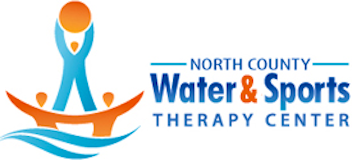We have all heard it… “You are what you eat.” But did you ever realize that what you eat can actually affect your body’s ability to heal after an injury? Your body has a natural recovery system with a set timeline as to how long it takes for certain tissues to heal. Without even knowing it, you could be fighting against that system by giving your body the wrong fuel, either by eating foods that increase inflammation in your body or by not eating the foods that naturally reduce inflammation. Why are we as physical therapists so concerned about inflammation? Well, we are so happy you asked…
As we mentioned above, your body has a natural recovery system when injury occurs to the tissues. Did you know that inflammation is actually the first step in that recovery system? Most people have heard about the importance of reducing inflammation after an injury but it is actually your body’s natural response to injury. Inflammation is characterized by swelling, redness, heat and pain. The swelling is due to damage to the tissues and vessels in the area of the injury causing an accumulation of fluid in the area of the injury. The redness and heat is due to increased blood flow to the injured area as well as the increase in cellular activity necessary for starting the healing/rebuilding process of the tissues. The pain can be due to the initial damage to the tissues, the increase in pressure on the tissues due to the swelling, and/or the chemical irritant of the tissue healing cells that come to the injured area. So, inflammation is normal and necessary for healing, but we need to make sure that the inflammation does not get out of control, or to the chronic stage, where it can become more of a hindrance than a help to injury recovery.
Where does the food come in? We could spend hours talking about nutrition and the science behind it all but, in the interest of simplicity, we will just lay out the basics. Everyone knows that high fat diets probably aren’t the way to go for healthy living, but you have to consider the type of fats to include in your diet (or exclude from your diet). Saturated fats, trans fats or fats rich in omega-6 should be limited as they can increase inflammation in your body. This means you should limit processed foods high in saturated or trans fats and vegetable oils like corn, safflower, sunflower and soybean oil. Instead, include monounsaturated fats that are rich in omega-3 such as fish, olive oil, and avocados, as they can help to reduce inflammation. Mixed nuts, flax oil, ground flax and other seeds can be beneficial as well. Diets with high omega-6 to omega-3 ratios can result in a decrease in collagen production, which can negatively affect healing as collagen is important for tissue healing. Therefore, aim for a balance with more omega-3 rich foods compared to omega-6 foods to help support healing.
Other areas you can spice up your diet (yes, pun intended) and promote healing is with dietary spices, herbs, and extracts. Tumeric and garlic have long been used to reduce inflammation. Bromelain, a plant extract found in pineapples, and Boswellia can help in reducing inflammation as well. Flavonoids found in cocoa, tea, red wine, fruits, vegetables, and legumes can assist in reducing inflammation due to their antioxidant actions. Now, remember what we said about the inflammatory phase being a normal part of the healing process? We want to control inflammation, not completely obliterate it, so eating only foods with anti-inflammatory properties is not recommended either. A well balanced diet with proper balance is the goal, making sure to stay hydrated to assist in flushing the body of any toxins or waste products from the injured tissues. Be sure to check with your physician to ensure any of these dietary changes are safe, as individuals and circumstances vary.
While nutrition can assist in the healing from injury, it is only part of the equation. At North County Water and Sports Therapy Center, our therapists work one on one with the patients for the full hour of the treatment session. This allows the therapist ample time for measuring and monitoring for signs of inflammation both before and after treatment in order to make sure that your body is responding well to treatment. We utilize manual therapy for reduction of inflammation to maximize the healing process. We can utilize modalities including (but not limited to) cold therapy, electrical stimulation, and KinesioTape to assist in the reduction of inflammation and its associated pain and swelling. We provide supportive techniques and exercises for the patient to perform independently to assist in the management of inflammation so that the healing process and tissue repair continues between treatments with your therapist. This attention to detail and individualized approach to treatment helps our patients successfully move out of the inflammatory phase of healing, and progress through each of the phases of healing, ultimately getting back to the activities they love to do.
Nutritional information in this blog is from Dr. John Berardi, PhD at www.precisionnutrition.com. Visit his website for further information about the effects of nutrition on injury recovery.
